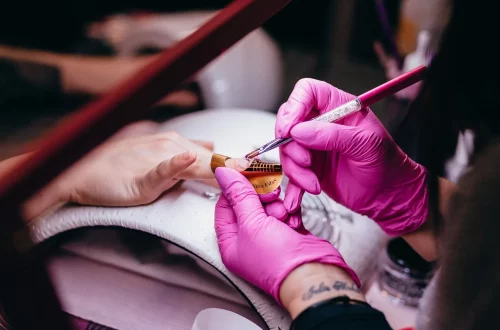
Exploring the Allure and Dynamics of the Bondage Room Experience
The concept of a bondage room experience often evokes a myriad of thoughts, feelings, and interpretations. For many, it represents a journey into the depths of personal desires, a space where boundaries can be explored and pushed, and where trust and vulnerability become paramount. In a society where various forms of expression are celebrated, the allure of bondage rooms has gained traction, transcending stereotypes and misconceptions.
Often viewed through a lens of curiosity and intrigue, these spaces challenge conventional understandings of intimacy and power dynamics. Each bondage room is unique, meticulously designed to create an environment that fosters safety, consent, and exploration. The experience goes beyond physicality; it involves emotional and psychological dimensions that can deepen connections between participants.
Understanding the allure of a bondage room requires delving into the dynamics of trust, communication, and the artistry of the space itself. As individuals navigate their desires and preferences within this realm, they often find a profound sense of liberation and self-discovery. The journey into the world of bondage rooms is not merely about the act itself but also about the transformative potential it offers to those willing to engage with it authentically.
The Psychology of Bondage: Trust and Consent
At the heart of any bondage experience lies the intricate interplay of trust and consent. Engaging in bondage activities demands a profound level of mutual respect and understanding between partners. The psychological aspects of this dynamic cannot be overstated, as the very foundation of the experience is built on the assurance that all parties involved are both willing and enthusiastic participants.
Consent is not merely a formality; it is the cornerstone of a healthy bondage experience. It involves clear communication regarding boundaries, desires, and limits. This process often includes discussions about safe words—agreed-upon signals that allow participants to pause or stop an activity if they feel uncomfortable. Establishing these parameters fosters a sense of safety, allowing participants to explore their boundaries without fear.
Additionally, the psychological thrill that comes from surrendering control can be exhilarating. For many, the act of being bound can evoke feelings of liberation rather than restriction. This paradox highlights the unique nature of bondage, where vulnerability is transformed into empowerment. The submissive partner, while physically restrained, often finds a sense of freedom in relinquishing control, creating a profound emotional experience.
Moreover, the dominant partner also experiences a shift in their psychological landscape. The responsibility of caring for a submissive partner fosters a sense of trust and connection. This dynamic can lead to enhanced emotional intimacy, as both partners navigate their desires in a shared space of vulnerability. Understanding these psychological dimensions is crucial for anyone interested in exploring the bondage room experience.
The Aesthetics of Bondage Rooms: Design and Atmosphere
The aesthetics of a bondage room play a pivotal role in shaping the overall experience. Every element, from the furnishings to the lighting, is carefully curated to create an environment that is both inviting and stimulating. The interplay of design and atmosphere can significantly enhance the emotional and psychological aspects of bondage.
A well-designed bondage room often features furniture that serves a dual purpose—both functional and aesthetic. Items such as bondage benches, St. Andrew’s crosses, and padded restraints are not merely tools; they are integral parts of the room’s identity. The choice of materials, colors, and textures contributes to the ambiance, evoking feelings of warmth or intensity depending on the desired experience.
Lighting is another crucial element in setting the mood. Dim lighting can create an intimate atmosphere, allowing participants to feel more at ease as they explore their desires. Conversely, brighter lights may be used to evoke a sense of playfulness or intensity, depending on the activities planned. The control of light can also symbolize power dynamics, enhancing the overall experience.
Sound also plays a significant role in the bondage room experience. The choice of music or ambient sounds can influence the emotional landscape, helping participants to relax or heighten their senses. The overall sensory experience is critical in creating a memorable and impactful bondage encounter.
In essence, the aesthetics of a bondage room are not just about visual appeal; they are about crafting an experience that resonates on multiple levels. A thoughtfully designed space can facilitate deeper connections, encouraging participants to fully immerse themselves in the exploration of their desires.
Exploring Boundaries: The Journey of Self-Discovery
Engaging in bondage can be a profound journey of self-discovery for many individuals. As participants navigate their limits and desires, they often uncover aspects of themselves that were previously unexplored. The act of surrendering control, whether as a dominant or submissive partner, can lead to significant personal insights and growth.
One of the most liberating aspects of the bondage room experience is the opportunity to confront and challenge personal boundaries. Many individuals enter this realm with preconceived notions about their desires or limitations. However, the dynamic nature of bondage can encourage them to reassess these boundaries in a safe and controlled environment.
This exploration can also extend beyond the physical realm. Many participants find that engaging in bondage activities prompts introspection about their emotional and psychological states. Questions about trust, vulnerability, and power dynamics often arise, leading to deeper conversations and realizations about personal relationships and self-identity.
Furthermore, the communal aspect of bondage—when engaging with a partner or a group—can foster a sense of belonging and understanding. Participants often share their experiences, fostering connections that transcend the physical acts of bondage. This sense of community can be incredibly empowering, as individuals come together to support one another in their journeys of self-exploration.
Ultimately, the journey of self-discovery through bondage is deeply personal and unique to each individual. The experiences and lessons learned within the bondage room can lead to greater self-awareness, confidence, and acceptance of one’s desires. This transformative potential is a significant aspect of why many individuals are drawn to the world of bondage.
Safety and Aftercare: Essential Components of the Bondage Experience
Safety is paramount in any bondage experience, making it an essential component that cannot be overlooked. Engaging in bondage activities involves inherent risks, both physical and emotional. Therefore, establishing protocols for safety is critical for ensuring a positive experience for all participants.
Before entering a bondage room, it’s vital to have open discussions about limits, desires, and potential risks. This dialogue should include not only the physical aspects but also the emotional implications of the activities planned. Understanding and respecting each other’s boundaries is essential for fostering a safe environment where exploration can occur without fear.
Furthermore, the concept of aftercare is an integral part of the bondage experience. Aftercare refers to the attention and care provided to participants following a bondage session. This practice can involve physical comfort, such as cuddling or providing water, as well as emotional support, such as discussing the experience and addressing any feelings that may arise.
Aftercare serves multiple purposes. It helps participants transition back to their everyday selves, allowing them to process the experience fully. Additionally, it reinforces the bonds of trust and intimacy between partners, ensuring that both individuals feel valued and cared for after the intensity of the experience.
In conclusion, the allure of the bondage room experience lies in its multifaceted nature, encompassing psychological, aesthetic, and emotional dimensions. By prioritizing safety, consent, and aftercare, participants can navigate their desires in a fulfilling and transformative way. The journey into this world is not just about exploration; it is a path to self-discovery and deeper connections.
—
**Disclaimer:** This article is not intended as medical advice. If you have health concerns or specific issues, please consult with a qualified healthcare professional.




